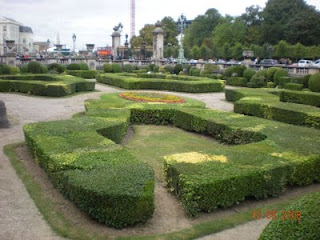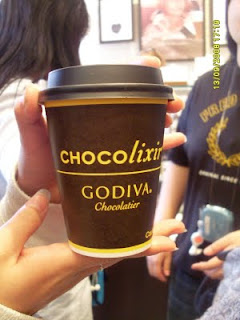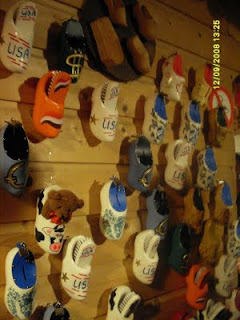13 Sept 2009
Antwerp
Once we got down from the coach and made our first step on Antwerp, we saw this pedestrian bridge. I do not really know what it is called. I just feel that it is nice and hence I snapped a photo of it.

We then headed to Old Market Square. It is surrounded by Guild houses and the Town Hall. Most of the guild houses are rebuilt after they burned down in the 16th century.
Pic: Guild houses. They reflect the tradition of building in wood with their use of stone to imitate wooden pillars and beams. The group of guild houses on this square is characterized by its variety; each facade strives to be different in height and rhythm. The guild houses feature extensive use of glass, with many window s to let in the maximum amount of light.

The picture below shows the Town hall, a renaissance building constructed between 1561 - 1565. The green statue is made by Jef Lambeaux and is called Brabo. It was inspired by a legend of a giant who used to live on the banks of the river Scheldt. Whenever sailors on the Scheldt refused to pay toll, he punished them by cutting off their hand. A Roman soldier called Silvius Brabo, killed the giant, cut off his hand and threw it in the river.

We then met a group of tourist from Japan (I guessed, from their dress). A few guys from our coach even approached them and requested to take picture with them.

Before we left, we tried the well known fries in a shop named Frituur no1. It was recommended by our tour guide. Fries are topped with the sauce of your favour. And the prices varies depending on the type of sauce. We finally made our decision to order three different sauces and share among us. Nice!!!!

Brussels
We stopped at Brussels city ring road to view the Atomium. It is a monument built for Expo '58, the 1958 Brussels World's Fair. Designed by Andre Waterkeyn, it is 102-metres tall, with nine steel spheres connected so that the whole forms the shape of a unit cell of an iron crystal magnified 165 billion times.
Also, we visited Brussels Royal Palace. It is similar to Buckingham Palace in London but of course not as grand as Buckingham Palace. We were able to look into the interior design of each room/hall for different purposes.

Then we reached Brussels city centre. We first walked to Mannikin Pis. It is a small bronze fountain sculpture depicting a naked little boy urinating into the fountain's basin. It was designed by Jerome Duquesnoy and put in place in 1618 or 1619. There are several legends behind this statue, but the most famous is the one about Duke Godfrey III of Leuven. In 1142, the troops of this two-year-old lord were battling against the troops of the Berthouts, the lords of Grimbergen. The troops put the infant lord in a basket and hung the basket in a tree to encourage them. From there, the boy urinated on the troops of the Berthouts, who eventually lost in the battle.
We also heard that Belgium is famous for its waffle. We saw a crowd of people standing in front of the counter waiting to make their order. Below shows the three types of favours:
Of course, we did not miss the Godiva Chocolate... They are expensive but we were happy to have an opportunity to taste a small piece of chocolate for free. We also buy a cup of chocolate. Oh my god, that was the best hot chocolate I have ever tasted. They put a piece of chocolate and blended together with the hot chocolate. It was so chocolaty.


























